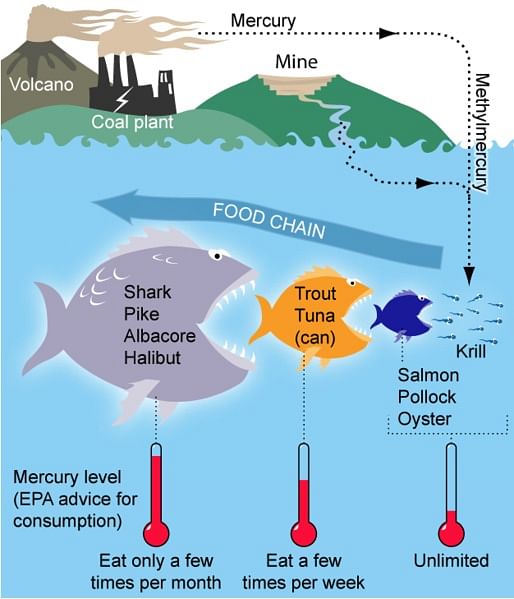

Sadly, even the Grand Canyon, a symbolic landmark of America’s natural environment, unfortunately isn’t immune to the ravages of pollution.
Concentrations of mercury and selenium in canyon’s food webs — the interconnected food chains in the environment — regularly exceed levels considered risky for fish and wildlife. Those findings are from a study from the U.S. Geological Survey scientists published in the journal Environmental Toxicity and Chemistry.
— Discovery
It's the kind of news that reads like Anthropocene poetry – both existentially dark and metaphorically potent. This vast fissure in the Earth's crust, which presents us with two billion years of geologic history and basically defines our image of the sublime, has been thoroughly contaminated by a relatively short period of industrial agriculture and other human activities.
More precisely, the selenium likely comes from agriculture and mining (although it also exists in the soil naturally). The mercury is thought to have been brought in by algae from Lake Powell, originating in "distant coal-burning electrical plants."
The researchers explained, "The findings of the present study add to a growing body of evidence showing that remote ecosystems are vulnerable to long-range transport and subsequent bioaccumulation of contaminants."
Researcher studied minnows, invertebrates and fish at six sites along the Colorado River and recorded mercury and selenium levels that exceed toxicity thresholds both for the fish and fish-eaters. For the most part, this includes humans too.
Through a process known as biomagnification, mercury level increase at each successive predatory stage. This graphic (from Wikipedia) is a handy reminder about how mercury moves from anthropogenic sources like coal plants or iron mines into water and up the food chain:

No Comments
Block this user
Are you sure you want to block this user and hide all related comments throughout the site?
Archinect
This is your first comment on Archinect. Your comment will be visible once approved.